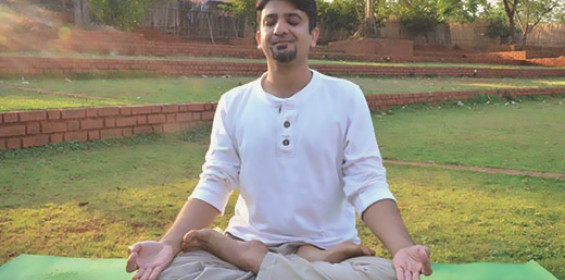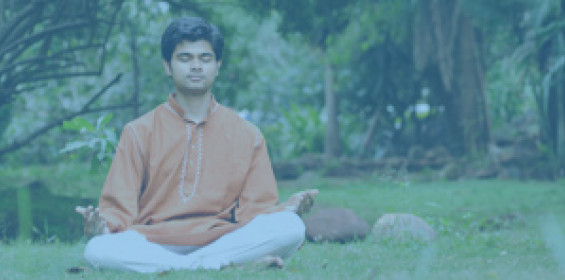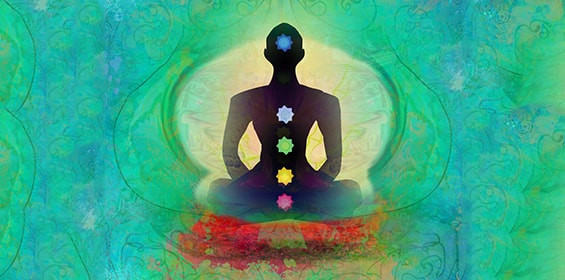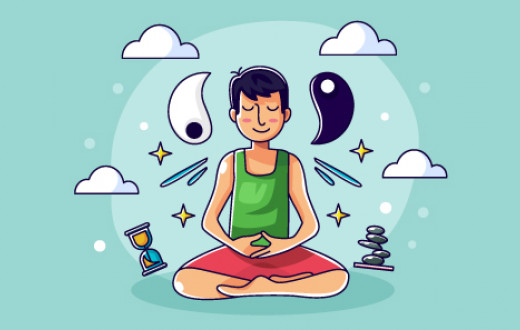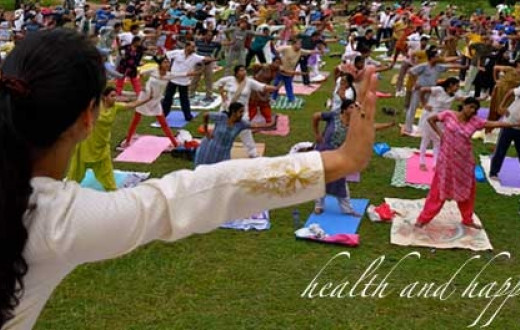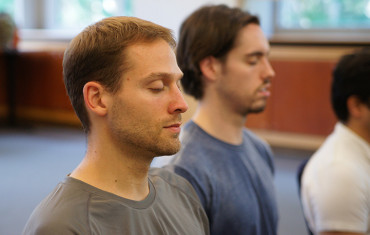Gurudev Sri Sri Ravi Shankar┃Posted: March 21, 2018
For many, the word “meditation” triggers feelings of failure and defeat. Quite often, when friends hear that I meditate daily, their responses range from “I could never sit still” to “I tried once but my mind was too crazy.” Before receiving a mantra and training from a meditation teacher, I too felt that my mind would never allow me to sit still with my eyes closed for more than 5 seconds. I gobbled up books on meditation and loved thinking about it, but when it came to actually practicing, I felt like a failure.
After learning from a teacher, I realized that the question was not whether I was capable, but whether I understood how to meditate properly. With so many different schools of thought, finding the best technique and becoming certain that you are meditating correctly can feel overwhelming.
Check out these five signs that you are meditating correctly:
- Following Instructions in Guided Meditations
- Having No Expectations
- Experiencing Positive Changes in Daily Life
- Detachment from Desires
- Comfort While Meditating
Join a Free workshop on Yoga, Meditation and Breath
#1 Following Instructions in Guided Meditations
Have you noticed that it’s much easier to dive deeper into meditation when guided with a few instructions? For many, guided meditations are a great way to start a practice. While listening to guided meditations, make sure to follow the instructions, as they are like rails that keep a train on its tracks, guiding you to your higher Self.
#2 Having No Expectations
Have you observed while driving that at certain times you experience beautiful scenery and a clear road, but at other times you find yourself stuck in traffic? Yet, regardless of what happens on the way, you arrive at the destination. Likewise, whether your mind seems to be stuck with busy thoughts or in a state of calm bliss during the process, meditation works, bringing us relaxation, purification, and expansion of consciousness.
When the mind is turbulent while meditating, our tendency is to attach judgments to that experience. However, rather than judging an unsettled meditation as “good” or “bad,” recognize that all happenings in meditation are simply a part of the stress release process. Whether we feel scattered or blissful, it’s all a beneficial part of the experience!
#3 Experiencing Positive Changes in Daily Life
While many judge the quality of their meditation by what happens when they close their eyes, the true test of a practice’s effectiveness is in your daily life. If you find more calmness, relaxation, clarity of mind, and sensitivity towards the needs of others, then your meditation is doing its work. And if you notice more random happiness throughout the day, know that you’re meditating correctly.
Even if you’re not feeling any changes, you still might be meditating correctly; sometimes the changes are very subtle. If you have doubts, voice your concerns to a meditation teacher.
#4 Detachment from Desires
Do you sometimes find yourself getting caught up in your desires and worries? Everyone experiences desires, and the goal of meditation is not to eliminate all desires. However, a correct, long-term meditation practice will help you develop a feeling of detachment from desires; you begin to perceive yourself controlling them rather than allowing them to control you.
According to Gurudev Sri Sri Ravi Shankar, “There is no problem if you have your desires, but don’t let the desires have you. Meditation happens with the attitude ‘I want nothing, I do nothing, I am nothing.’”
#5 Comfort While Meditating
It’s always advisable to sit when you meditate. Whether you sit on a sofa, chair, bed, or the floor, make sure you don’t lie down or incline your body. Lying down may result in sleepiness, as the body expects sleep when in a horizontal position.
Sitting with a straight back is important. However, feeling comfortable is equally important to ensure a deep, quality meditation. If you find yourself fidgeting, or feeling distracted by aches in the body, practice yoga asanas beforehand to release physical tension and develop strength and flexibility over time. Doing so will allow you to relax into a seated pose for the duration of your meditation.
Gurudev Sri Sri Ravi Shankar says, “Meditation is the art of doing nothing and letting go.”
As the above list indicates, no single good or bad experience indicates a perfect or failing practice. However, to assure that you learn correctly, contact a Sahaj Samadhi meditation teacher near you. Not only will you learn proper technique, but you’ll have a support system and someone to address any concerns or questions that arise.
Based on wisdom talks of Gurudev Sri Sri Ravi Shankar

